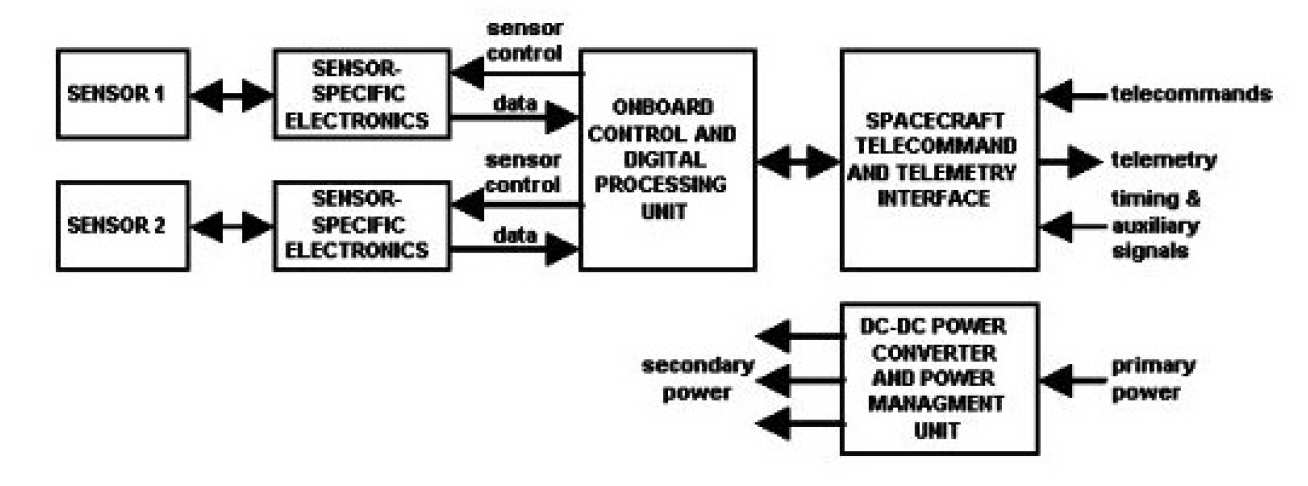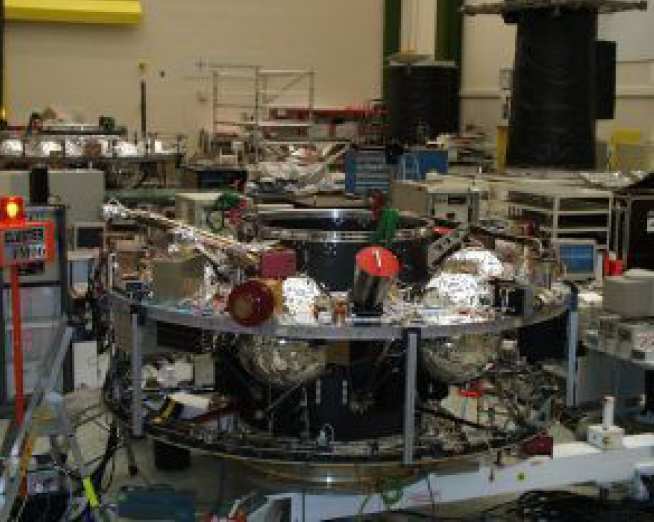Space Instrument Design
Design fundamentals
The generic block diagram of a 'classic' scientific space instrument is shown in the figure below. It consists of:
- one or more sensors or detectors.
- electronics units associated with the sensors which transform the basic physical parameters to be measured (e.g. magnetic fields, particle fluxes/energies etc.) into electrical signals.
- an onboard control and data processing unit.
- interface electronics to handle communications with the spacecrafts bus (telecommands, Science & Housekeeping data, timing and auxiliary signals etc).
- power converter unit which takes the standard voltage from the spacecraft (usually + 28 V) and provides the required secondary voltages to the instrument.

Each block can be thought of as an instrument sub-unit requiring a separate sensor head or custom PCB (Printed Circuit Board) inside the electronics housing. Instrument teams are usually international consortiums with several institutions partaking in sub-unit design and manufacture and test and integration of the complete instrument taking place at the PI institution. Examples of this type of project are Cluster, Double Star and Venus Express magnetometers and the Rosetta PIU (Plasma Interface Unit).
Robust Architectures

Due to the harsh environments experienced by payload during both launch and routine operations careful consideration must be given to the particular radiation budget for a given mission in the early stages of instrument design. Almost always some protection is built into the design by implementing systems that are redundant and containing no single point failures (SPF). Extensive testing is a major component during payload development projects in order to establish good reliability and a robustness to fault conditions.
Future Trends
The drive towards smaller spacecraft and constellation type missions means that future generations of space instruments require lower resources and increased levels of integration with the spacecraft bus without compromising scientific performance. An active area of our
research is in the field of instrument miniaturisation design techniques through the application of cutting edge embedded technologies. The expectation of this work is the realisation of very lower power & mass sensors (e.g. digital magnetometers) and complete instruments confined to just one or two PCBs.


